-
Large areas of Plains states now drier than during Dust Bowl
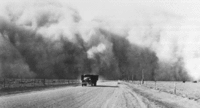
As a result of the drought conditions that have largely remained a constant since 2011, parts of the Texas and Oklahoma panhandles, as well as northeastern New Mexico and southeaster Colorado, are now drier than they were during the infamous Dust Bowl of the 1930s. While experts explain that the possibility of another Dust Bowl is not likely due to modern farming and irrigation techniques which have been enacted as a response in the 1930s, greater erosion due to drought and wind has resulted in a number of vicious dust storms.
-
-
Active learning of STEM subjects improves grades, reduces failure
A significantly greater number of students fail science, engineering, and math (STEM) courses which are taught lecture-style than fail in classes incorporating so-called active learning that expects them to participate in discussions and problem-solving beyond what they have memorized. Active learning also improves exam performance — in some cases enough to change grades by half a letter or more so a B-plus, for example, becomes an A-minus. The researchers found that, on average, in a STEM course with 100 students signed up, about 34 fail if they get lectured to but only 22 fail if they do active learning. If the failure rates of 34 percent for lecturing and 22 percent in classes with some active learning were applied to the seven million U.S. undergraduates who say they want to pursue STEM majors, some 2.38 million students would fail lecture-style courses vs. 1.54 million with active learning. This 840,000 additional students failing under lecturing, a difference of 55 percent compared to the failure rate of active learning.
-
-
Teleoperated robots for smarter disaster response
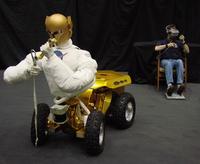
Electrical engineers have developed telerobotics technology which could make disaster response faster and more efficient. The researchers aim to combine existing “smart” technologies better to serve society during disaster and crisis response. This includes using teleoperated robots for rescues and safety operations; a high-tech dispatch system that gathers information from cameras and sensors and pushes it out to first responders; drones for damage surveillance and rescues; and vests outfitted with sensors and GPS tracking to be worn by search-and-rescue dogs.
-
-
Using light to detect trace amounts of explosives
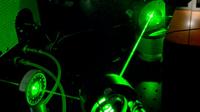
Researchers may help in the fight against terrorism with the creation of a sensor that can detect tiny quantities of explosives with the use of light and special glass fibers. The researchers describe a novel optical fiber sensor which can detect explosives in concentrations as low as 6.3 ppm (parts per million). It requires an analysis time of only a few minutes.
-
-
Farmers try to cope with the challenges posed by extreme weather
Across the country, farmers are reporting that they are at yet another critical juncture for agriculture. Citing more unpredictable and severe weather due to climate change, scientists are researching defensive measures and looking to previous agricultural challenges for inspiration. Some are looking to the way individual farmers and government agencies addressed the Dust Bowl hardships of America during the Great Depression as a source of inspiration.
-
-
Miami “Ground Zero” for risks associated with sea level rise
During a special Senate hearing last month in Miami Beach, Senator Bill Nelson (D-Florida) described Florida as “Ground Zero” for climate change and the threat it poses to coastal communities. Sea level rise is especially worrisome to Floridians because Miami has the most property assets at risk in the world, according to the World Resources Institute(WRI). Miami has $14.7 billion in beach front property. Also, fifteen million out of the state’s twenty million residents live in coastal communities vulnerable to sea level rise.
-
-
Researchers map 198,000 glaciers to improve sea-level rise estimates
An international team of researchers has completed the first mapping of virtually all of the world’s glaciers — including their locations and sizes — allowing for calculations of their volumes and ongoing contributions to global sea rise as the world warms. The team mapped and catalogued some 198,000 glaciers around the world as part of the massive Randolph Glacier Inventory, or RGI, better to understand rising seas over the coming decades as a result of melting glaciers.
-
-
As fracking activity grows in Mexico, so does the number of fracking-induced tremors
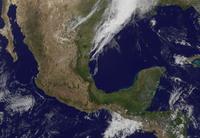
Mexico has the fourth largest amount of recoverable shale gas in the world, with 681 trillion cubic feet. As fracking activity has increased in the state of Nuevo Leon, so have the number of tremors. Between January and mid-April, forty-eight tremors, some reaching a magnitude of roughly 4.3, were recorded across the state of Nuevo Leon, compared to two tremors in the same period last year.
-
-
Ice melting in East Antarctica may lead to unstoppable sea-level rise
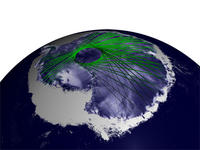
The melting of a rather small ice volume on East Antarctica’s shore could trigger a persistent ice discharge into the ocean, resulting in unstoppable sea-level rise for thousands of years to come, a new study finds. East Antarctica’s Wilkes Basin is like a bottle on a slant, say the study’s authors. Once uncorked, it empties out. The basin is the largest region of marine ice on rocky ground in East Antarctica.
-
-
Energy-subsidy reform can reduce carbon emissions, add years to oil exports: study
Reform of energy subsidies in oil-exporting countries can reduce carbon emissions and add years to oil exports, according to a new study. The study reviews the record of energy-subsidy reforms and argues that big exporters should reduce energy demand by raising prices, and that this can be done without undermining legitimacy of governments that depend on subsidies for political support
-
-
Sandia offers free classes to high school students at the Lab’s Cyber Technologies Academy
In the rapidly changing world of cybersecurity, who better to learn from than the professionals who live in that world every day? High school students are getting just that opportunity through Sandia National Laboratories’ Cyber Technologies Academy, free classes for high school students interested in computer science and cybersecurity.
-
-
Switching from cattle fields to “carbon farms” to tackle climate change
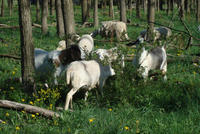
Changing cattle fields to forests is a cheap way of tackling climate change and saving species threatened with extinction, a new study has found. The main use of land in communities the western Andes of Colombia is cattle farming, but a new study found farmers could make the same or more money by allowing their land naturally to regenerate. Researchers report that under carbon markets designed to stop global warming, these farmers could get paid to change the use of their land from growing cows to “growing carbon” — receiving around $1.99 per ton of carbon dioxide the trees remove from the atmosphere.
-
-
Wetland preservation is good business
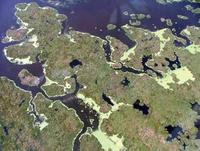
A recently published study is making the case for wetland preservation by highlighting the economic incentives that such preservation could provide to urban centers.Infrastructure investment in urban waterfronts could soon be seen as one of the best economic decisions a city could make. The National Oceanic and Atmospheric Administration says that “$1 million invested in coastal restoration creates 17.1 jobs, compared to just 8.9 jobs for every $1 million invested in oil and gas development.”
-
-
U.S. corn yields increasingly vulnerable to hot, dry weather
The United States produces 40 percent of the world’s corn, mostly in Iowa, Illinois, and Indiana. As more than 80 percent of U.S. agricultural land relies on natural rainfall rather than irrigation, corn farmers in these regions depend on precipitation, air temperature, and humidity for optimal plant growth. U.S. corn yields are growing more sensitive to heat and drought. Farmers are faced with difficult tradeoffs in adapting to a changing climate in which unfavorable weather will become more common.
-
-
Longer periods of tornado activity are more destructive, but also more predictable
Significant tornado outbreaks, and especially strong tornadoes, are more likely occur within periods of activity lasting three or more days, according to a new study. The study examined thirty years of U.S. weather records and found that an outbreak of twenty or more reported tornadoes had a 74 percent probability of occurring during a period of tornado activity lasting three or more days. During those same periods, a tornado rated 3 or higher on the Enhanced Fujita scale had a 60 percent probability of hitting.
-
More headlines
The long view
New Technology is Keeping the Skies Safe
DHS S&T Baggage, Cargo, and People Screening (BCP) Program develops state-of-the-art screening solutions to help secure airspace, communities, and borders
Factories First: Winning the Drone War Before It Starts
Wars are won by factories before they are won on the battlefield,Martin C. Feldmann writes, noting that the United States lacks the manufacturing depth for the coming drone age. Rectifying this situation “will take far more than procurement tweaks,” Feldmann writes. “It demands a national-level, wartime-scale industrial mobilization.”
How Artificial General Intelligence Could Affect the Rise and Fall of Nations
Visions for potential AGI futures: A new report from RAND aims to stimulate thinking among policymakers about possible impacts of the development of artificial general intelligence (AGI) on geopolitics and the world order.
Smaller Nuclear Reactors Spark Renewed Interest in a Once-Shunned Energy Source
In the past two years, half the states have taken action to promote nuclear power, from creating nuclear task forces to integrating nuclear into long-term energy plans.
Keeping the Lights on with Nuclear Waste: Radiochemistry Transforms Nuclear Waste into Strategic Materials
How UNLV radiochemistry is pioneering the future of energy in the Southwest by salvaging strategic materials from nuclear dumps –and making it safe.
Model Predicts Long-Term Effects of Nuclear Waste on Underground Disposal Systems
The simulations matched results from an underground lab experiment in Switzerland, suggesting modeling could be used to validate the safety of nuclear disposal sites.
